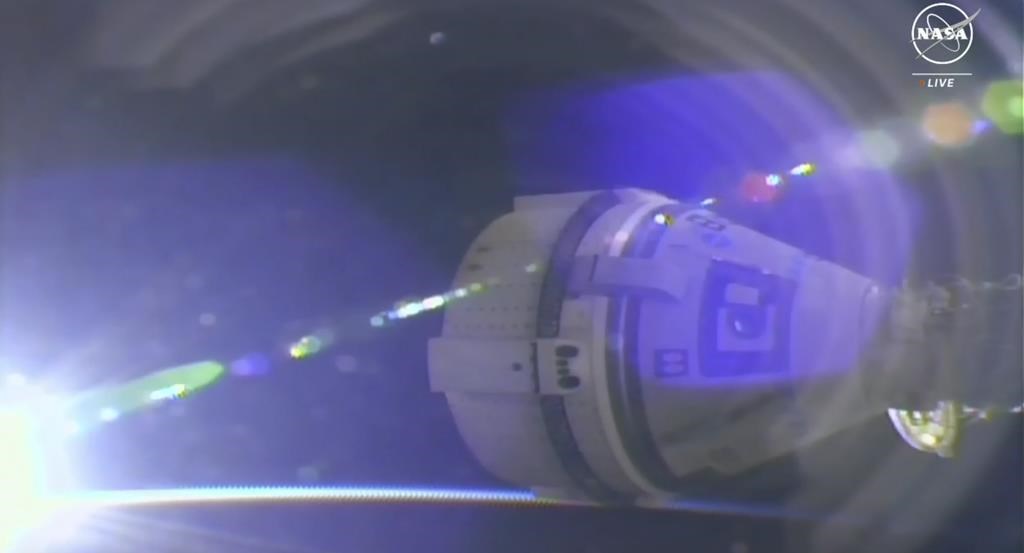Boeing is facing another set of safety issues, but this time it transcends earthly operations.

The company has shared that its CST-100 Starliner spacecraft is currently docked at the International Space Station (ISS) and is suffering a fifth helium leak in its propulsion system.
In a statement earlier this week, NASA wrote that spacecraft teams are examining “what impacts, if any, five small leaks in the service module helium manifolds would have on the remainder of the mission.”
The news follows what can only be called a dicey start to the mission. After failed back-to-back launch attempts, the Starliner capsule finally launched last week. Once approaching the space station, it missed its first docking opportunity on June 6 due to technical issues.
After targeting another docking window, five of the spacecraft thrusters failed during its approach, forcing astronaut Butch Wilmore to take manual control of the craft for a period of time, before four of the thrusters were recovered and the capsule was returned to autonomous mode.
A week later, there was some panic after NASA accidentally broadcast a simulation of astronauts being treated for decompression sickness, prompting speculation of an emergency in posts on social media. In a live YouTube channel broadcast, a female voice could be heard telling crew members to “get commander back in his suit,” check his pulse and provide him with oxygen, later saying his prognosis was “tenuous.”

Get breaking National news
NASA later clarified that the “audio was inadvertently misrouted from an ongoing simulation where crew members and ground teams train for various scenarios in space and is not related to a real emergency.”
But now, the Starliner is facing the pesky problem of multiple helium leaks. According to SpaceNews.com, NASA knew about one leak at the time of the Starliner’s launch on June 5, but decided with Boeing officials it was a one-off problem and that the mission would go ahead.
“We can handle this particular leak if that leak rate were to grow even up to 100 times,” Steve Stich, manager of NASA’s Commercial Crew Program, said during a news conference before the Starliner launch, according to Gizmodo.
By the time the craft was well on is mission, hours after launch, controllers identified two more leaks.
Now, with a fifth leak detected, NASA says it’s assessing the impact of the leaks on the remainder of the mission, which includes undocking from the ISS and reentry into Earth’s atmosphere.
“While Starliner is docked, all the manifolds are closed per normal mission operations preventing helium loss from the tanks,” the space agency wrote earlier this week.
NASA seems confident at this point, that despite the anomalies and what appears to be a larger issue with Boeing’s propulsion system, that the Starliner will have enough helium to safely finish the mission and return to Earth.
“Engineers evaluated the helium supply based on current leak rates and determined that Starliner has plenty of margin to support the return trip from the station,” NASA wrote in its update. “Only seven hours of free-flight time is needed to perform a normal end of mission, and Starliner currently has enough helium left in its tanks to support 70 hours of free flight activity following undocking.”
Helium is used to pressurize the spacecraft’s reaction control system (RCS) maneuvering thrusters, allowing them to fire, according to Boeing.
Astronauts Wilmore and Sunita “Suni” Williams are continuing to test Boeing’s Starliner as part of the data collection required for potential NASA certification to send regularly crewed missions to the ISS. The space agency has been mostly using SpaceX’s Dragon craft to ferry crew and cargo to and from the ISS.
Williams and Wilmore’s tests include making sure Starliner can support a crew with its own air, making sure the craft can regain power after being put into minimal power mode during ISS missions and checking the service module’s batteries.
They were scheduled to return to Earth on Friday, June 14, but that date has been pushed back to June 18 at the earliest.
— With files from Reuters
















Comments